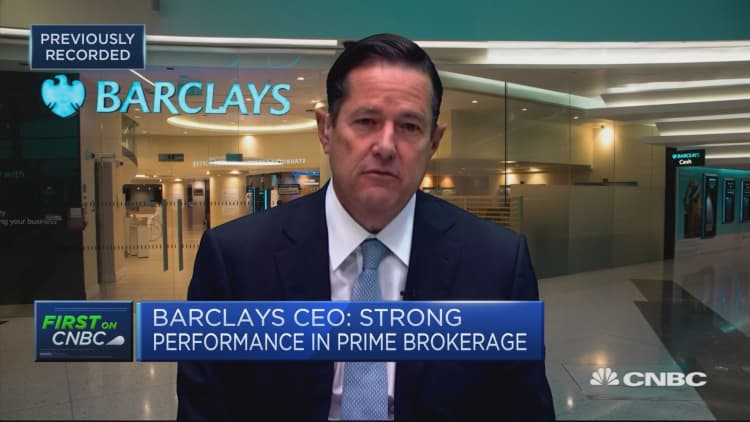Persistent low interest rates from central banks risks creating "asset bubbles" which could pop if interest rates begin to rise again, Barclays CEO Jes Staley warned Thursday.
European Central Bank (ECB) rates have been at record lows following the euro sovereign debt crisis of 2011 in a bid to boost inflation and stimulate growth, while the Bank of England kept its rate steady at 0.75% on Thursday. The U.S. Federal Reserve on Wednesday announced a 25 basis point cut, its first since 2008.
Speaking to CNBC's "Squawk Box Europe" Thursday following the British bank's second-quarter results, Staley suggested central bank policy was one of the biggest challenges facing the banks.
"In the medium-term, it is a challenge for all banks on the income side when you have interest rates approaching zero and in many cases below zero. Effectively when risk-free money is free, that is a challenge for the banking industry," he said.
"On the other side of that, if it holds off a recession and generates economic growth, there is great benefit to the banks in having that growth. It's a fine balance that the central bankers have to play."

Staley added that major banks have to do their part to extend credit to businesses to help facilitate the growth sought by central bankers.
While acknowledging that central banks are trying to enable financing and investment to drive economic growth, recent policy remains "challenging" for financial markets, and gives rise to concerns about "asset bubbles."
"If government interest rates are effectively zero, that can create bubbles in the valuation of other assets that might be exposed if interest rates start to move back up again," Staley said.
However, he gave credit to these institutions for navigating monetary policy in a way which has supported a 10-year economic recovery since the financial crisis, and said it remained to be seen whether dovish central bank policies would translate into a continuation of economic growth, or whether the potential headwinds from trade and geopolitical issues would counterbalance them.


